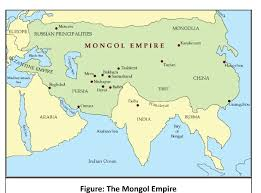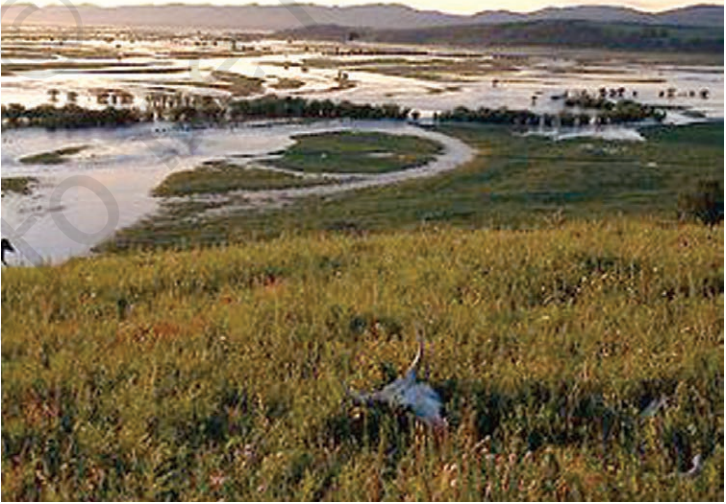Nomadic Empires – Complete Guode For Class 11 History Chapter 3
Welcome to iPrep, your Learning Super App. Our learning resources for the chapter “Nomadic Empires” in History for Class 11th are designed to ensure that you grasp this concept with clarity and perfection. Whether you’re studying for an upcoming exam or strengthening your concepts, our engaging animated videos, practice questions, and notes offer the best of integrated learning with interesting explanations and examples.
Objectives Of Learning Nomadic Empires
The chapter “Nomadic Empires” delves into the rise and significance of the Mongol Empire, focusing on its social, political, and military organization. It covers the era of Genghis Khan and the expansion of the empire, examining how the Mongols influenced world history through their conquests and governance. The chapter concludes with a discussion of the legacy of the Mongol Empire in the context of global history.
The chapter “Nomadic Empires” explores the fascinating history of the Mongol Empire, which was one of the most influential empires of the medieval world. Emerging from the steppes of Central Asia, the Mongols, led by Genghis Khan, established an empire that spanned across continents. This chapter investigates the social and political conditions that facilitated the rise of the Mongols, the career of Genghis Khan, and the organization of the empire. It also looks at the Mongols’ impact on history and their enduring legacy.
Objectives of the Chapter
Now that we have explored the importance of the chapter, let’s outline the objectives of studying it.
- To understand the social and political context in which the Mongol Empire emerged.
- To examine the career and achievements of Genghis Khan.
- To explore the organizational structure of the Mongol Empire, including its military and social systems.
- To analyze the impact and legacy of the Mongol Empire in world history.
Now let’s explore the various sections of the chapter.
Firstly, to understand the origins and development of the Mongol Empire, let’s delve into the introductory section of the chapter “Nomadic Empires.”
Introduction
- The Mongols were a nomadic people, living in tents and relying on livestock for their subsistence.
- They were divided into various tribes, each with its leader.

Now, to understand the foundation of the Mongol Empire, let’s delve into the section titled “Social and Political Background” of the chapter “Nomadic Empires.”
Social and Political Background
- The Mongols were a nomadic people who lived in Central Asia.
- They were divided into patrilineal lineages and often engaged in conflict with sedentary societies.
- The Mongols eventually established a vast empire, conquering territories in China, Iran, and Eastern Europe.


Now, in order to understand the leadership that shaped the Mongol Empire, let’s delve into the section titled “The Career of Genghis Khan” of the chapter “Nomadic Empires.”
The Career of Genghis Khan
- Genghis Khan, born Temüjin, united the Mongol tribes through a series of military victories.
- He became the supreme ruler of the Mongol Empire and embarked on a series of conquests.

Now, to understand the continuation and expansion of the empire, let’s delve into the section titled “The Mongols after Genghis Khan” of the chapter “Nomadic Empires.”
The Mongols after Genghis Khan
- After Genghis Khan’s death, the Mongol Empire was divided among his sons and grandsons.
- While the empire continued to expand, internal divisions and power struggles eventually led to its decline.
Now, in order to understand the structure of the Mongol Empire, let’s delve into the section titled “Social, Political and Military Organisation” of the chapter “Nomadic Empires.”
Social, Political, and Military Organisation
- The Mongols had a hierarchical social structure, with the khan at the top.
- The Mongol military was organized into units called “tumen,” each consisting of 10,000 soldiers.
- The Mongols were skilled in horse archery and siege warfare.

Now, in order to understand the broader impact of the Mongol Empire, let’s delve into the concluding section titled “Conclusion: Situating Genghis Khan and the Mongols in World History” of the chapter “Nomadic Empires.”
Conclusion: Situating Genghis Khan and the Mongols in World History
The Mongol Empire had a significant impact on world history. The Mongols facilitated the exchange of goods, ideas, and cultures across Eurasia.
Legacy of the Mongol Empire:
- The Mongol conquests contributed to the decline of traditional empires like the Byzantine Empire and the Abbasid Caliphate.
- The Mongols introduced new technologies and cultural practices to the regions they conquered.

Finally, as we have gained comprehensive knowledge about the chapter “Nomadic Empires”, let’s reflect on the overall learning value of this important lesson.
Overall Learning Value of the Chapter
The chapter “Nomadic Empires” provides a comprehensive overview of the Mongol Empire’s rise and its significant role in world history. By examining the social and political background, the career of Genghis Khan, the structure of the empire, and its legacy, the chapter helps us understand the profound impact of the Mongols on medieval and modern history. The Mongol Empire’s innovations and achievements left an enduring legacy that shaped the course of global history.
In conclusion, the CBSE Class 11th History Chapter – “Nomadic Empires” offers a fascinating journey into the rise of one of history’s most remarkable empires. Through this chapter, students gain a thorough understanding of the social and political factors that enabled the Mongol Empire’s expansion, led by the visionary Genghis Khan. “Nomadic Empires” sheds light on the empire’s organizational structure, military prowess, and the impactful legacy that shaped the world.
This CBSE Class 11th History chapter, “Nomadic Empires,” not only enriches students’ historical knowledge but also underscores the Mongol Empire’s lasting influence on global history. With iPrep Learning Super App’s comprehensive resources, students can confidently navigate and appreciate the complex historical landscape presented in “Nomadic Empires,” ensuring a solid grasp of this pivotal chapter in Class 11th History.
Practice questions on Chapter 3 - Nomadic Empires
Get your free Chapter 3 - Nomadic Empires practice quiz of 20+ questions & detailed solutions
Practice Now








